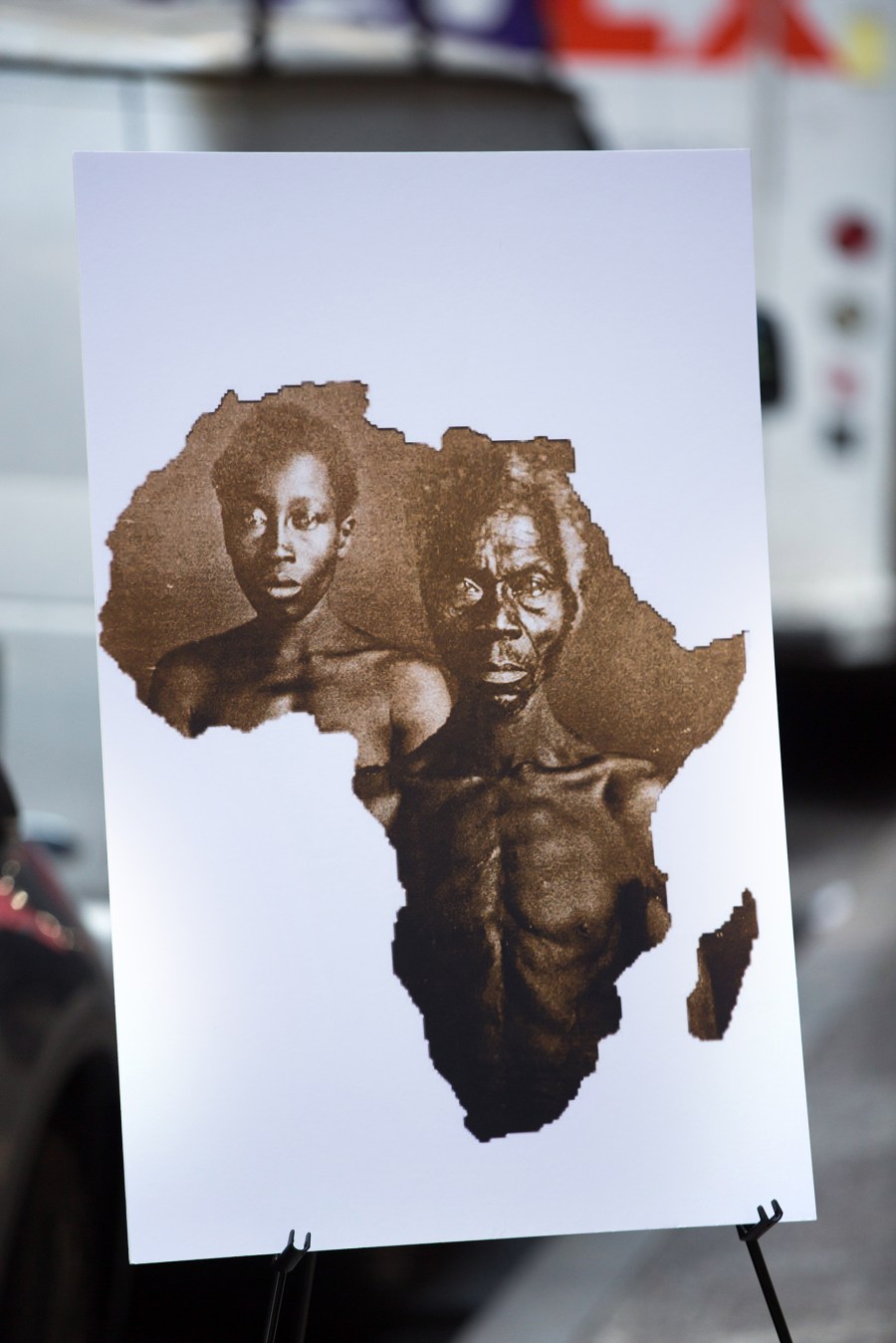In 1871, Henry D. Schmidt, a New Orleans doctor, “gifted” the crania of 19 formerly enslaved African American and mixed-race individuals to Dr. Emil Ludwig Schmidt at the University of Leipzig to study the racist hypothesis that a person’s morality or intelligence could be determined by crevices and bumps of their skull. A century and a half later, in a presumed act of higher consciousness, the German university no longer felt the need to house the ill-gotten skulls and, on Saturday, the remains of those 19 disregarded souls were given a proper burial in New Orleans.
The 1850 images were commissioned by Harvard biologist Louis Agassiz to support the idea that human races evolved separately.
Saturday’s event at Dillard University took place on the same week that Harvard University announced that it is relinquishing what are believed to be among the earliest photos of enslaved people in the United States. The 1850 images of a father and daughter known as Renty and Delia, who were photographed naked to the waist, were commissioned by Harvard biologist Louis Agassiz to support the theory of polygenism, the idea that human races evolved separately.
Harvard would probably still be clutching those photos if Tamara Lanier, an author who says she’s a descendant of the father and daughter pictured, hadn’t fought a 15-year legal battle with the university. But the photos won’t come to her. Renty and Delia’s images will now be placed at the International African American Museum in South Carolina, the state where they were enslaved.

As I sat through the three-hour service, which included a city acknowledgement by New Orleans Mayor LaToya Cantrell, musical tributes and a riveting performance from Dillard University’s Theatre Ensemble personifying the 19 human beings we were paying homage to, I couldn’t help but think about the history of Black Americans being the guinea pigs for experimentation or examination or the subject of incomplete theories, under the guise of scientific advancement. Or the irony of racist individuals using “inferior” Black specimens to interrogate complex ideas about human physiology, and still arriving at racist conclusions even with evidence in their possession that contradicts their hypotheses.
We live in a moment where there is a persistent effort to erase all knowledge of these atrocities and pretend as if they were just figments of Black folks’ imagination. But Eva Baham, who chaired the Cultural Repatriation Committee that brought the remains of the 19 New Orleanians home, said during Saturday’s service that the purpose of studying history is “to move forward. And when we keep our past hidden, we are starting over every day.”
We could not verify any descendants. And so we have to step in and be their family.
freddi williams evans
The memorial service for Adam Grant, Isaak Bell, Hiram Smith, William Pierson, Henry Williams, John Brown, Hiram Malone, William Roberts, Alice Brown, Prescilla Hatchet, Marie Louise, Mahala, Samuel Prince, John Tolman, Henry Allen, Moses Willis, Henry Anderson and two other unidentified souls was unlike any other I have witnessed. The decedents had transitioned over a century and a half ago; however, their departure from this realm could not have been considered peaceful before this weekend’s ceremony. Roughly 200 community members filled the sanctuary of Dillard’s Lawless Memorial Chapel to pay their respects to these ancestors who were so horribly disrespected after they died.
“It was emotionally draining because you’re trying your best to make some connections and to search and find [that] there’s hope,” Freddi Williams Evans, a member of the Cultural Repatriation Committee, told me. “We could not verify any descendants. And so we have to step in and be their family.”











